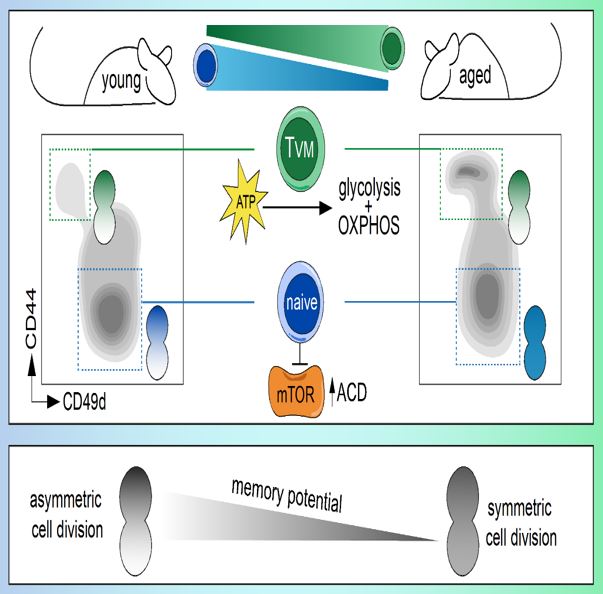Asymmetric cell division shapes naive and virtual memory T cell immunity during ageing
Immunity relies on heterogeneity, which in T cells, amongst other mechanisms, is achieved by asymmetric cell division (ACD). A recent ‘Nature Communications’ paper by the Oxenius group investigates how ACD shapes immune responses and CD8 T cell memory formation during ageing.

Efficient immune responses rely on heterogeneity, which in CD8+ T cells, amongst other mechanisms, is achieved by asymmetric cell division (ACD). It was find that ageing, known to negatively impact immune responses, impairs ACD in murine CD8+ T cells, and that this phenotype can be rescued by transient mTOR inhibition. Increased ACD rates in mitotic cells from aged mice restore the expansion and memory potential of their cellular progenies. Further characterization of the composition of CD8+ T cells reveals that virtual memory cells (TVM cells), which accumulate during ageing, have a unique proliferation and metabolic profile, and retain their ability to divide asymmetrically, which correlates with increased memory potential. The opposite is observed in naive CD8+ T cells from aged mice. The data provide evidence on how ACD modulation contributes to long-term survival and function of T cells during ageing, offering new insights into how the immune system adapts to ageing.
Link to the paper in external page Nature Communications.